5 Composite Decking Lighting Ideas
Our composite decking looks great in any setting, but you can really make your outdoor spaces shine with our decking
Products in Stock
Lowest Prices
Express Delivery
10-Year Warranty
Early April Sale. Up To 15% Off.
For many, their garden is their pride and joy, and they spend painstaking hours weeding, watering and flowering. But, while a lazy Sunday during the warmer months of spring and summer may be what you envision when picturing the perfect day for gardening tasks, there are a whole host of jobs you can do in the autumn and winter to get the best out of your garden year-round.
According to Census data, 87% of households in the UK have a garden, meaning there are roughly 23 million gardens across the country. To assess the current state of the UK gardening culture, we surveyed 1,000 Brits from our internal database.
We unearthed that while 71% of Brits tended to their gardens in spring and summer, just 24% got out year-round, with a mere 5% doing any gardening in autumn and winter.
To support green-fingered Brits in perfecting their blooms from New Year to Christmas, we have created The Ultimate Gardening Guide: Year-Round Habits to Cultivate Your Habitat, which includes:
Our survey revealed that a third of Brits don’t feel overly confident about gardening, with just under a quarter stating a lack of time was their biggest hurdle when tackling tasks.
The thought of getting out into your backyard in the wet and cold may be off-putting, but it can be a great way to make your garden more enjoyable year-round and in a better state for summer. Plus, with a quarter of Brits stating gardening helps them to relax, getting your hands mucky could help bat away those winter blues.
Even with all the will in the world, it can be hard to know where to start, with 78% of Brits admitting to seeking assistance with their outdoor space. So, at Dino Decking, we have created an easy-to-follow gardening calendar checklist with a step-by-step plan for all 12 months.
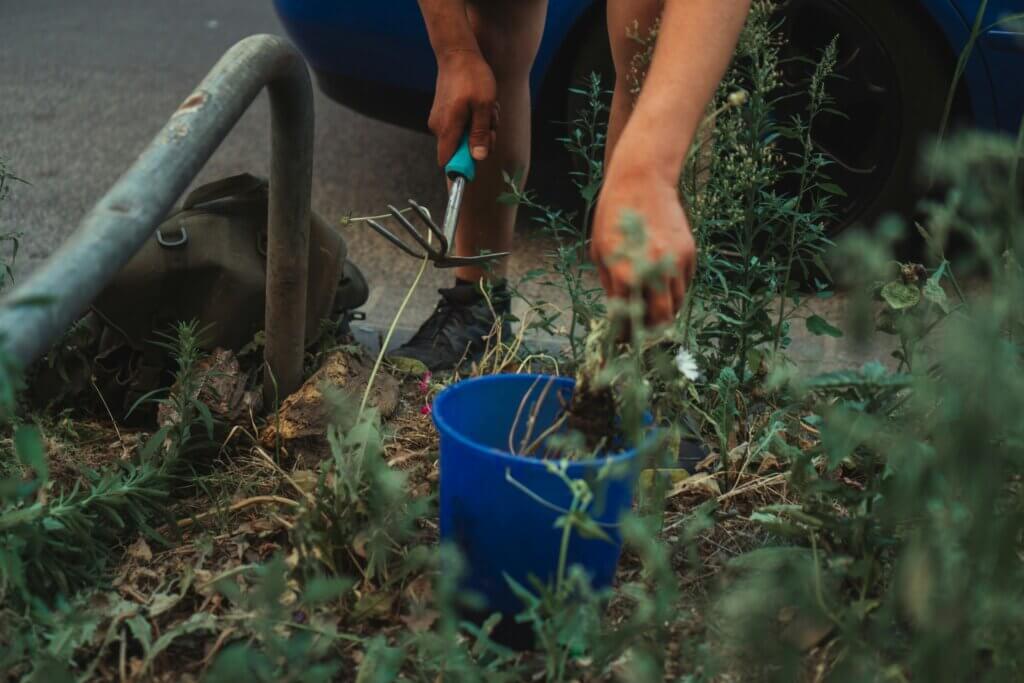
| Month | Gardening jobs | Plants | Tips |
| January | Your plants need protection and maintenance during this time of year, along with it being a great month to start planning your garden layout and order seeds.Clear away soggy debris or collapsed perennials to ensure your new growth isn’t smothered and limit root rot. | Bare-root trees, bulbs, fruit trees, grapes, snowdrops | Plant bare-root roses, fruit trees, shrubs, hedging and ornamental trees when the ground isn’t frozen.Press mistletoe berries into the bark of apple trees to establish your own mistletoe plants.Establish new colonies of snowdrops and hellebores by buying plants in flower, so you can choose the prettiest blooms |
| February | Now is the time to begin preparing the ground for the upcoming warmer seasons. It is recommended to cut back ornamental grasses to ground level along with preparing the ground for beds and borders.Prune and rejuvenate old trees, shrubs and climbers, but don’t cut them right back to nothing. Just cut out the oldest branches (the ones that are thickest with the darkest bark). Leave the other branches for now. Just remove a few each year and in 3 or 4 years you’ll have replaced the whole plant. | Snowdrops, early veg, wisteria, ivy | Look out for aphids, they start to become active again as it begins to warm up. Try using a pest control spray if you notice unwanted garden visitors.Make sure the frosts haven’t lifted newly planted trees and shrubs. If so, re-firm around them lightly using your hands or heels if necessary. |
| March | March is the time when your monthly gardening jobs will begin to speed up – this is the time for mulching, sowing, and repotting.Check tender new shoots for aphids, and remove before infestations get out of hand.Start planting seeds outdoors and begin weed control. | Spring flowers, herbs, lilies | Don’t forget to deadhead early spring bulbs – but don’t chop back the leaves for at least six weeks after flowering.The most important gardening job in March is probably sowing.Sow hardy annuals to fill gaps in immature beds and borders. Sunflowers, stocks, cornflowers and poppies can all be broadcast (scattered on the surface) onto raked soil or sown into drill holes. |
| April | As a general rule, this is the time for planting up. Fill your beds with colour using pansies, tulips (they will soon spring up) and marigolds.Forward plan ahead of the summer. Plant up summer baskets and grow undercover before positioning in late May. | Perennials, berries, hydrangeas | The point has come in the yearly gardening calendar to start looking out for early pests and diseases – hit them hard now to avoid problems later on.April can still bring freezing nights, so protect tender flowers and vegetables from late frosts – keep horticultural fleece on standby |
| May | May is when the garden really begins to wake up – and it’s the time to gear up the gardening jobs for the summer.Now is the time for active lawn maintenance and the last chance to sow or lay new lawns until autumn.Plant out summer bedding plants which are brilliantly versatile. They work in beds, borders, containers or hanging baskets which can be displayed in even the smallest of spaces, so just because you don’t have a flower bed, don’t be put off. | Annuals, tomatoes, lavender, wisteria, sunflowers | Late May is the time for planting out your tomatoes, if you have an upright variety tie the main stem on to a tall cane for support whilst it grows. Remember to tie in the new stem as it grows upwards each week and pinch out any side shoots.From the middle of the month onwards, plant tender exotics, frost-tender vegetables and sweet pea plants started off under glass.Keep on top of weeding and hoeing.Watch out for and deal with pests.Top-dress permanent pot plants with fresh compost and mulch |
| June | June is all about regular, consistent maintenance of your plants; in short, remember to weed, water and feed your plants, and do it often.Pay special attention to container plants, bedding plants and veggies. Liquid-feed tubs and baskets every two weeks if you haven’t already mixed in controlled-release fertiliser.Watering is essential as the temperature rises, so make it part of your daily routine. Borders, bedding, pots and containers, hanging baskets and even the lawn need to get a regular drink or they could wilt and die. | Roses, summer veggies, citrus trees, olive trees | Remove spent flowers in early summer which can result in a second bloom, or at the very least, can help prepare your perennials for a healthy bloom next year.Create and commit to a weeding schedule, we suggest pulling out weeds every week or so to keep your garden looking its best. Troublesome weeds will be at their strongest during the warmer months, so make sure you continue to remove them. |
| July | July is a busy time of vigorous growth and flowering – and for the gardener, this is the time for properly managing all that growth.July often brings the hottest summer weather, so up the water for the plants that need it. Bedding plants, leafy vegetables, seedlings and new plantings are most prone to drying out. Ideally, water your plants early in the morning or in the evening; avoid watering during the hottest part of the day. | Lavender, herbs, strawberry runners, apples | Continue vigilant weed control. Up the feeding: seasonal decking displays and baskets will do well with a weekly dose of liquid tomato fertiliser.If it’s dry, stop mowing the lawn, or, if possible, raise the height of the cut. Brown patches in hot spells are inevitable but the lawn will quickly recover, so there’s no need to water.Deadheading spent flowers encourages further blooms. Not only will the plant look fresh and tidier, but it will also trick the plant into channelling its energy away from seed production and into forming additional flowers instead. |
| August | August is a great time to enjoy your garden and be proud of what you’ve created.There’s also lots of fruit to be had now we’re in late summer. Harvest blackberries (pictured), peaches, nectarines, apricots, the last of the summer raspberries and early varieties of eating apples. Other fruits will need pruning once all of the fruit has been picked. | Sunflowers, fall crops, perennials, fruit trees | Continue to regularly care for your decking and container plants in August. These plants are enjoying their peak and their abundant roots require watering daily. We recommend watering in the evening, once the sun goes off them. They’ll have all night to soak up a good, long drink – some smaller containers might even need to be watered twice a day.As the end of summer draws near, avoid promoting growth outdoors by stopping feeding plants by the end of August. Besides being a waste of time, it can even harm the plants |
| September | Before the warm days are gone for another year, get outside and make the most of all the good work you’ve done in your garden over the last few months. We also recommend giving your garden a tidy place at this time of year.September can be a time of relative peace for the hardworking gardener: generally, there are fewer gardening jobs to do during this month than in other months, apart from collecting seeds from summer-flowering plants. | Winter squash, daffodils, roses | Go on regular snail hunts, especially on damp evenings, to reduce populations.Turn compost to speed up decomposition, especially ahead of the leaves beginning to fall.Mow less frequently and raise the height of the lawn mower blade as grass growth rate starts to slow down. |
| October | As your garden begins to transition into autumn, now is the time to stay on top of tidying, along with doing the necessary prep for the cold months ahead.If you have apple or pear trees, now is the time to pick the fruit. | Pansies, fig trees, evergreen shrubs | For pots and boarders full of fragrant colour in the spring now is the time to plant out your flower bulbs. Snowdrops, alliums, daffodils and Hyacinths are just some bulbs to plant in autumn.Continue planting spring bulbs throughout the month, but leave tulips until November.Fallen leaves are an important natural resource, so don’t simply discard them: clear up fallen leaves into black bin bags or create a separate pile next to the compost heap to make leaf mould ready for next October’s soil conditioning. |
| November | Autumn is probably the busiest period in the gardening calendar. Think of it as getting your garden ready for bed. Winter months will see plants and trees go into dormancy in order to rejuvenate in time to wake again in spring.November is a rainy and windy month, and frosts are not uncommon.Garden furniture will need protecting at this time of year, too – cover any wooden pieces, or move them into sheds and garages. | Evergreens, shrubs, tulips, garlic and onions | Now is the time to plant bulbs ahead of the spring, but make sure you bury your bulbs deep enough. Aim to plant them to three times its own depth, measured from top to bottom. If you’ve got a lot of planting to do it’s worth using a proper bulb-planting tool. If you garden on heavy soil, such as clay, drop a handful of coarse gritty sand into the bottom of the hole to help drainage.Protect young and slightly tender plants from cold by adding a deep mulch of compost or bark chippings over the roots. |
| December | As the year draws to its close, and the days are at their shortest, limit gardening work to protecting tender plants and aiding wildlife in your garden.In colder conditions, less work will be needed in the garden, therefore, it’s a great time to service/maintain any garden tools ready for when spring comes back around. | Holly, winter greens, bare-root roses | Although it makes sense to water plants sparingly at this time of year, do make sure that container plants don’t dry out completely.Fork over vacant ground; turning the ground over several times reduces soil pests naturally by exposing them to birds. Also, clear away debris to prevent harbouring slugs and snails. |
While there are general times of year to complete tasks, it is important to note that there can be variation due to significant weather differences across regions. Climate, soil type and weather patterns are different across the UK. So, before starting tasks, get to know your local weather considerations.
With a colder and windier climate, growing seasons can be cut short in Scotland, particularly in the North.
79% of Scottish gardeners preferred to garden in the warmer months of spring and summer with just 12% liked tending to their space year-round.
However, Scottish gardeners should not mistake plant dormancy and cold weather as a reason to stop cultivating. In fact, autumn is a great time for them to plant spring bulbs and start protecting tender plants from the upcoming harsh winds of harsh winds.
Our survey found that almost half (47%) of southwestern gardeners use their garden mainly for dining al fresco. So, with the temperature drop in autumn, their outdoor space may not see much action.
However, this need not be the case as the southwest experiences milder and wetter autumns and winters allowing for longer growing seasons.
Planting and harvesting here can go later into autumn than in other parts of the UK as long as gardeners are mindful of excess moisture and wetter soil.
The climate in the South East tends to be warmer and drier with milder winters, which is great news for the 64.8% of gardeners who cultivate plants or vegetables here.
Greenfingered Brits in the South East can look forward to extending their planting seasons, focusing more on drought-tolerant plants. Like the rest of the UK, frost protection here is still needed, but often not until later in the season.
Just 1 in 4 Midlands gardeners make the most of the region’s temperate climate and moderate rainfall with year-round gardening.
The Midlands benefits from the wet weather of the North while maintaining some of the warmer weather coming from the South, making it a great place to garden, even in the colder months.
To maximise moderate autumn and winter weather, green-fingered Midlanders should focus on protecting their plants from frost, keeping an eagle eye on moisture levels.
Knowing the climate considerations to have for your garden is only part of the picture. When tailoring a routine you will also need to keep in mind the major role its soil type plays. Rainfall and watering could be rendered useless if the soil structure in your garden cannot retain moisture, or holds on to too much drowning your planting efforts.
Soil type can vary greatly depending on where you are in the country, so we have broken down the soil you are likely to have in your garden, by region, below.

Typically found in East Anglia and the South Down regions, this type of soil drains quickly and can dry out. Gardeners are recommended to prioritise adding organic matter to improve soil structure and water retention. Mulching is essential to conserve moisture and protect plant roots.

Typically found in parts of the Midlands and North West England, the soil is heavy and prone to waterlogging, especially in winter. Gardeners can focus on improving drainage and aerating the soil. Raised beds can help with these issues, and mulching helps keep the soil workable.
More commonly found in parts of Scotland and Wales, peaty soils are high in organic matter, and moisture and can be acidic. Gardeners might add lime to balance pH or choose plants that thrive in acidic conditions.
The weather and existing soil in your garden have a huge impact on how plants flourish, but so do the wildlife that visit and the ecosystem they create.
While some wildlife can hinder the growth of your plants, some, like hedgehogs (aka the gardener’s friend), can be a huge help. The wildlife you encounter in your outdoor spaces will all depend on where you live. We have detailed what you may see and where below.
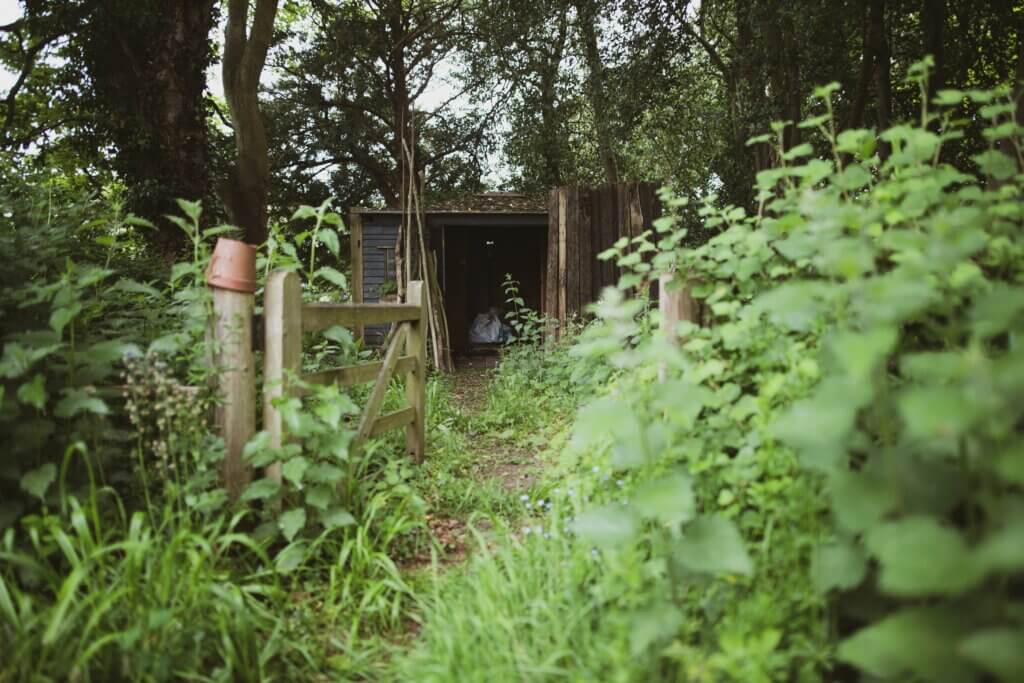
Gardeners may need to consider local wildlife more actively in rural and woodland bordering areas as they tend to have a higher population of wildlife like badgers and rabbits. Having secure fencing and making use of raised flower beds can limit the foragers that may want to nibble on your plants.
Encouraging pollinators by providing habitats for hedgehogs and birds can boost the local ecosystem while getting free pest control for your garden.
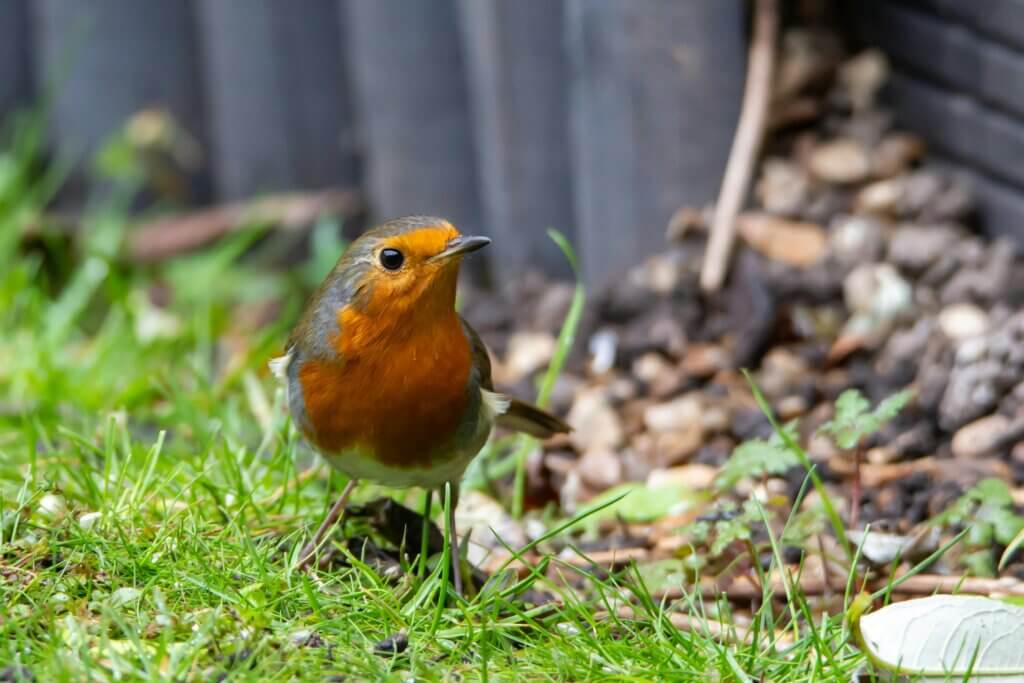
With fewer natural predators, pests like slugs and snails can be more prevalent in inner city areas. While there is less wildlife in urban areas, gardeners can still attract natural pollinators and pest eaters into their space by providing shelter and food for hedgehogs and birds.
Read Next: 11 Easy Garden Makeover Ideas
So, once you have adjusted your gardening routine to maximise nature’s offering, it is time for you to take the reins and complete regular tasks to upkeep the space.
But, of course, the path to achieving the garden of your dreams is not always a simple one, especially if you have a busy schedule or have inherited a garden that is worse for wear after a move.
For many, they simply do not know where to start, leading 78% of Brits to seek external assistance on gardening tasks.
Of those asking for help, the most popular person to ask was a partner, who helped in 1 in 4 instances. Parents were also a popular pick, with 15% of Brits asking them for help, though dads were asked over mums 60% of the time.
While some tasks need a helping hand, there are several straightforward tasks that Brits can do throughout the year to tend to their garden without any support and we have compiled five of them below.
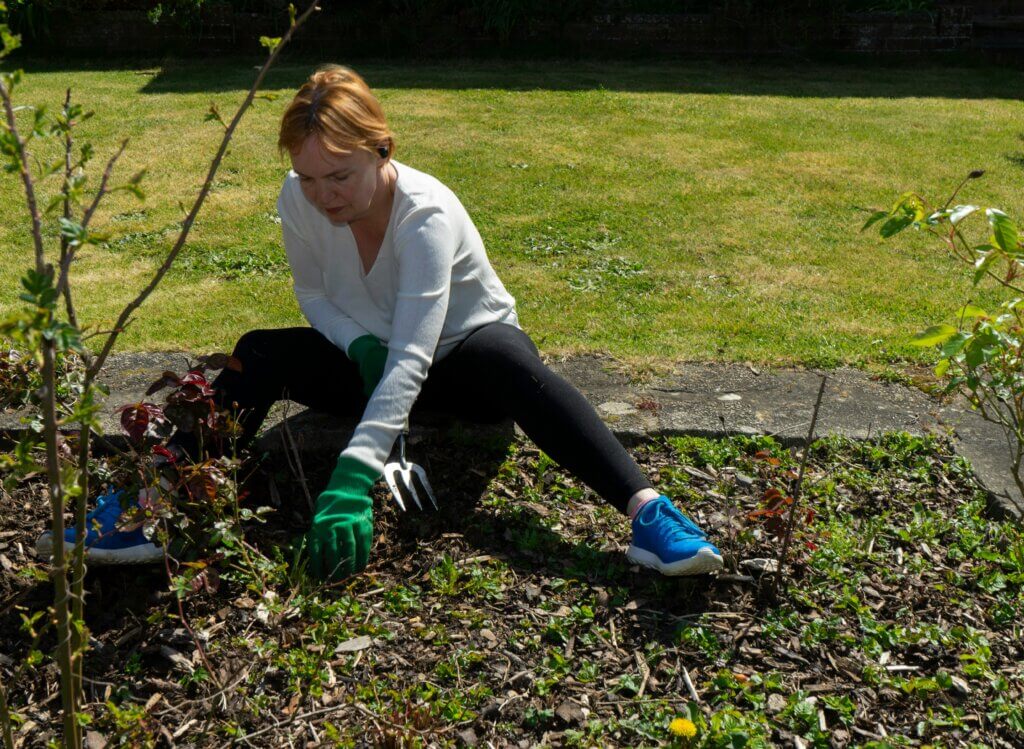
While tending to your flourishing garden may bring on a host of challenges, the initial planting of flowers and plants is one of the simplest garden tasks. So much so, that 16% of Brits have expressed that they feel planting is the gardening task they are most successful at.
Although weeding is not a favoured task, just 8% of Brits enjoy weeding, and 22% wish to improve, it is one the simplest to do.
Weeds take away vital nutrients from the plants you actually want in your garden.
By weeding regularly, you can ensure that your blooms, veggies and fruits have a better chance of flourishing.
While this task can be time-consuming, there are several ways to remove weeds that are pretty straightforward, including using mulch to deprive them of light, tools like a hoe, or simply removing them by hand, ensuring to get the full root. You can also prevent weeds from growing in the first place by installing a weed membrane beneath the soil.
Heavy rainfall, high winds, and significant temperature drops over the colder months can take a serious toll on garden furniture. So, one of the simplest tasks you can do to elevate your space’s appearance is to give your garden furniture some much-needed TLC.
Use a mild soap, cloth and soft sponge to clean off any built-up dirt, pollen or surface mould from your furniture. Depending on how dirty it is, a simple hose-down afterwards may suffice, with a pressure washer handy for muckier items.
To limit the environmental damage to your outdoor furniture, cover or pack it away in the autumn so it is ready for spring.
Layering mulch around your plants is a simple task with a whole host of benefits for your garden.
Mulch is a thick material placed around plants to lock in moisture, suppress weeds, help improve soil structure and protect plants from the drying effects of wind and too much sunshine.
Mulch comes in various forms, including organic (manure, leaf mould, and wood chippings) and non-organic options (rubber and plastic sheeting).
The best time of year to lay down your protective mulch is spring and autumn.
Just under a quarter of Brits (24%) admitted to taking a trial-and-error approach with their garden. While some tasks are easily freestyled, others require some extra reading or additional support, with 59% of Brits admitting they received help with a gardening task in the past six months.
To help gardeners get the most out of their outdoor space, we have created a list of four tips to take on some of the most challenging gardening tasks.
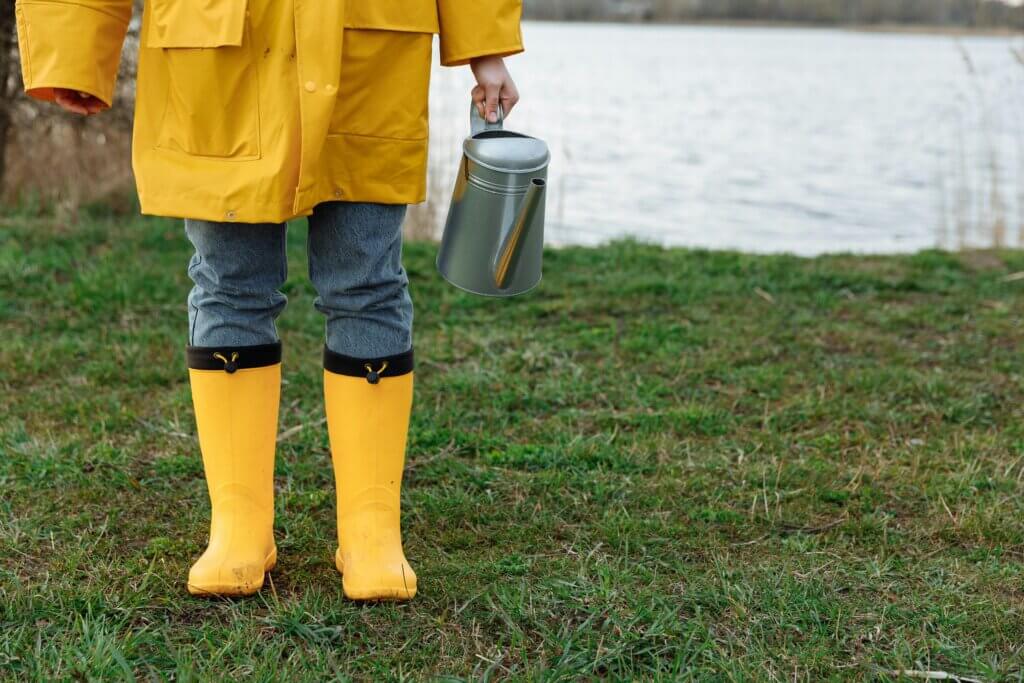
For privacy and safety, most gardens have some kind of fencing to separate them from neighbouring gardens and public spaces. However, just 11% of Brits have successfully put up a garden fence in their lifetime.
For those looking to revamp their gardens with fresh fencing, our full how to install composite fencing includes a step-by-step guide and video covering everything from the materials and tools you will need to the potential challenges you may face.
Garden pests come in all manner of shapes and sizes. Whether slugs eating your vegetables or aphids attacking your plant leaves, they are equally annoying and can be a pain to deal with.
We found that only 5% of Brits felt confident doing their own pest control, with 1 in 10 confessing that they wanted to improve their ability to remove creepy crawlies from their gardens.
1 in 5 UK gardeners stated that weather conditions were the biggest challenge facing them in their gardens, with rainy downpours causing waterlogged soil while cold snaps causing frost and plant decline.
Poor soil quality was one of the biggest challenges facing Brits with 13% stating it was a difficulty for them. The notorious Great British weather, which can see it raining for half the year, can play a factor in some gardens with excess water resulting in poor soil quality.
Our previous advice on mulching is a great way to improve soil structure and breathe life back into your garden.
While gardening can be beneficial for our mental health, and a great workout, it is not without its risk. 77% of green-fingered Brits have had some kind of injury while gardening with nearly 1 in 5 suffering from a back strain. To help gardeners continue enjoying their garden without injury, we have teamed up with physiotherapist and osteopath, Tim Allardyce, to share how Brits can limit and avoid injury.
Tim Allardyce shares: “By far the most common injury we see from gardening is back pain. Unfortunately, gardening often involves a lot of forward bending, for several hours at a time.
“Although there is mixed research on what injury that causes, we do see patients come to us with muscle injuries, and disc herniations as a result of the increased load on the spine.
“Back pain is very common in the UK anyway, but being bent forwards for a prolonged period of time puts a lot of potential strain through the back.
“While bending the back is generally fine, the key issue is the repetitive nature of it, and the length of time.
“The other issue we often see is shoulder injuries. These can occur from pulling, raking, and digging, and are more common in older patients.
“Over many years, the rotator cuff muscles can gradually degenerate leaving them susceptible to small tears.
“It is estimated that around 70% of people over 70 years old have a tear in their rotator cuff muscle. However, putting too much load through the shoulder while digging or pulling can exacerbate or cause a rotator cuff tear.”
Tim Allardyce continues: “The key thing is, gardening is not bad. Actually, exercising from gardening is great for the body, and we encourage people to exercise and stay physically fit.
“The best way to avoid injury is to improve your general physical conditioning. This can be done through working out, walking, lifting weights, or performing a sport.
“When our bodies are strong, we are far less likely to get injured. If you are suffering an injury, proceed with gardening slowly, take plenty of rest, and don’t overdo it until your injury has healed. Often, just reducing the time you are gardening for, or taking breaks, can significantly reduce the likelihood of injury.”
Tim Allardyce said: “The best exercises involve keeping your core, back and shoulders strong.
“Reformer Pilates is fantastic for whole body workouts. Specifically, exercises like a kneeling plank or plank are great for the core, while squats are great for strengthening the legs.
“It is also important to improve mobility to our backs, and exercises such as the cat camel is a good one to mobilise our spine to reduce stiffness. Exercises such as forward arm raises with weights, or lateral arm raises with weights, are a good way to strengthen the shoulders.”
We surveyed 1,000 of our customers from across the UK and asked them questions about their gardening habits. We then compiled this data to get nationwide statistics.
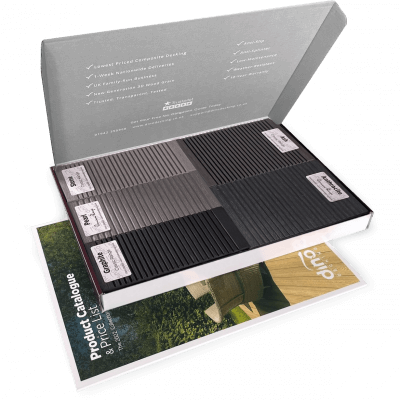
Our sample pack contains a sample piece of each colour currently available. Order your free sample pack today to compare the colours and get a true feeling of the Dino Decking range!
Our composite decking looks great in any setting, but you can really make your outdoor spaces shine with our decking
If the idea of having rats under your decking makes you shiver, don’t worry. We’ll let you know the signs
Business hours
Monday: 09:00 – 17:30
Tuesday: 09:00 – 17:30
Wednesday: 09:00 – 17:30
Thursday: 09:00 – 17:30
Friday: 09:00 – 17:30
Saturday: Closed
Sunday: Closed
Contact us
01942 355968
support@dino.co.uk
Collection Address: Unit 1 Wetheral Close Hindley Ind Estate Wigan Greater Manchester North West WN2 4HS
Pages
Products
Testing
Copyright 2025 Dino Decking Ltd All Rights Reserved.
VAT Number: GB296097848.
Company Number: 10837233.